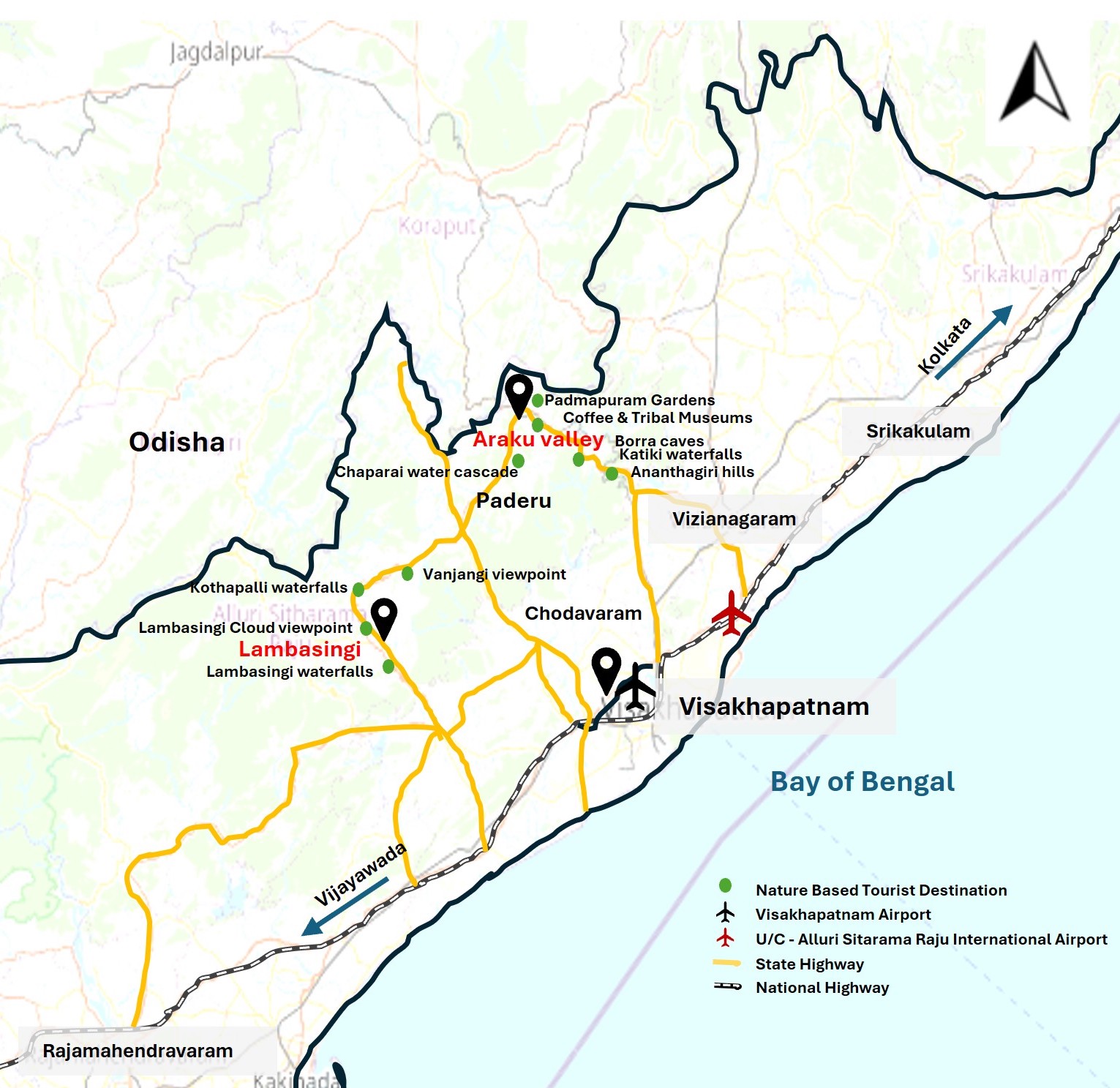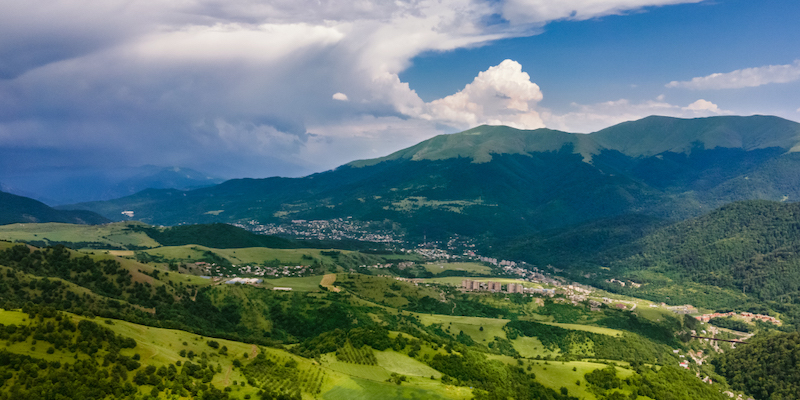REGION OVERVIEW
Araku Valley, located in the Eastern Ghats of Andhra Pradesh’s Alluri Sitharama Raju district, sits at an altitude of ~985–1,300 meters above sea level and is part of the biodiverse Ananthagiri and Sunkarimetta Reserved Forests. Around 116 km (3-hour drive) from Visakhapatnam, Araku is known for its coffee estates, tribal heritage, and pleasant year-round climate. The region has historically remained under-explored in comparison to other southern hill destinations. However, recent improvements in connectivity and government-backed tourism initiatives have positioned Araku as an emerging eco-tourism destination.
The Araku–Ananthagiri–Borra–Lambasingi stretch is increasingly seen as a contiguous development corridor with significant potential for nature-based hospitality formats and holiday homes.
The region is currently in an exploration and early development stage under Government of India’s Swadesh Darshan 2.0 scheme, aimed at promoting sustainable and responsible tourism. Recent infrastructure upgrades, including road widening, improved rail tourism circuits, and the State Tourism Policy 2024–29, have made Araku more accessible and investable.
- Araku Valley is known for its tribal heritage, coffee plantations, and lush landscapes.
- Lambasingi, often referred to as the “Kashmir of Andhra Pradesh,” is the only place in South India that experiences sub 0°C temperatures and occasional frost in winter.
- Paderu and Ananthagiri act as intermediate hubs connecting Araku and Lambasingi and are witnessing increasing eco-tourism interest.

TOURISM OVERVIEW:
- Araku receives approximately 15–20 lakh tourists annually, with peaks in October–January and April–May. Over 95% of the visitors are domestic, with primary demand from leisure travelers (75–80%), including families, couples, student groups, and weekenders from Visakhapatnam, Vijayawada, Hyderabad, and Odisha.
- The average stay is 1.5 to 2.5 days, often extended when Lambasingi or Paderu is included. Key attractions include Borra Caves, coffee plantations, Katiki waterfalls, Chaparai cascading waterway, Padmapuram Gardens, and the scenic Araku–Ananthagiri rail route. Lambasingi complements this with viewpoints, strawberry plantations, and winter tourism appeal.
- Connectivity enhancements such as the widening of the Araku–Paderu road, upgrades to Visakhapatnam International Airport, and Araku Railway Station, known for its scenic setting and the Vistadome-equipped Kirandul Express (08551), turning the journey into a major attraction. With support from Swadesh Darshan 2.0 and rising experiential travel demand, Araku is steadily transforming into a year-round, sustainable eco-tourism hub rooted in culture and nature.
HOSPITALITY OVERVIEW
- Araku Valley’s hospitality sector is at a nascent but expanding stage, with around 200 operational hotel keys, largely concentrated in midscale resorts and eco-tourism accommodations. Key supply includes government-backed resorts such as Haritha Valley, Mayuri Hill, Ananthagiri Haritha Resort and Tyda Haritha Jungle Bells, along with a few privately run properties catering to budget and nature-oriented traveller’s while emerging camping facilities are gaining traction among adventure seekers.
- Recent visibility is driving fresh investor interest in Araku. Two notable upscale projects—Ayatana Resorts (60 keys) and the Oberoi Group (150 keys close to the upcoming Alluri Sitarama Raju International Airport) are currently in the pipeline. While Araku itself lacks branded luxury hotels, it benefits from access to proximity to Visakhapatnam, which has a well-established base of luxury hotels including (Taj Gateway, Novotel, Radisson Blu, Fairfield by Marriott), positioning it as a potential eco-luxury extension of the Visakhapatnam circuit
- Challenges persist in the form of lack of formal classification, and uneven infrastructure around key attractions. This offers opportunities for organized hospitality players and eco-resort developers to enter the market with standardized, sustainable products targeting the experience-seeking, FIT (Free Independent Traveler), and MICE (Meetings, Incentives, Conferences, and Exhibitions) segments.
OUTLOOK
- The completion of the Alluri Sitarama Raju International Airport slated for June 2026, is poised to reduce travel time for tourists, making it more accessible and the development of Araku Valley.
- Over the next 5 years, the region is expected to see significant growth in resort development across midscale and upscale segments, driven by increasing demand for nature-based travel, coffee tourism, and wellness-focused getaways.
- With a unique combination of tribal culture, scenic landscapes, and enhanced connectivity, Araku is well-positioned to attract both leisure and FIT segments seeking immersive, sustainable experiences.



